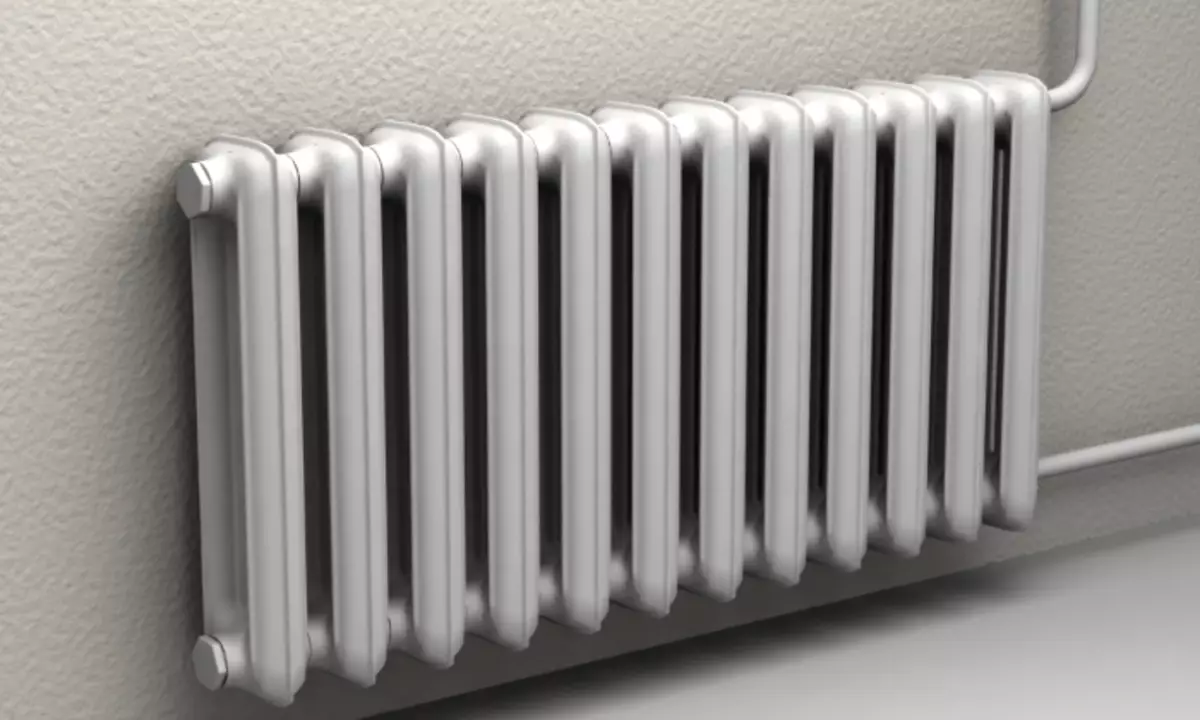
On the eve of winter cold weather, the question of how to prepare water for heating systems. Proper preparation of water is doubly important for owners of private country sites, not connected to the heat center and receiving water from wells or wells. If the water is rigid, contains third-party impurities, for example, iron or manganese, this is fraught with the failure of not only plumbing and household electrical appliances, but also by damaging heat exchangers, corrosion of pipelines and radiators.
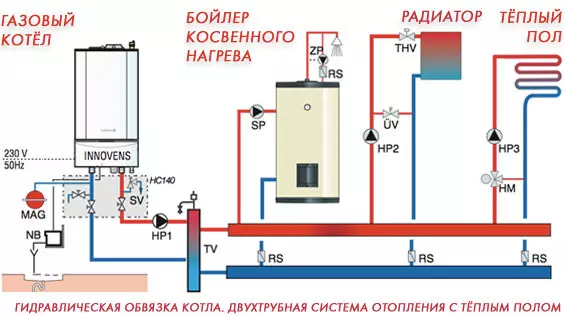
Country house heating system.
The first and most important stage of work
The main thing is to be taken before planning water treatment measures for the heating system, to conduct a chemical analysis of the composition of water.
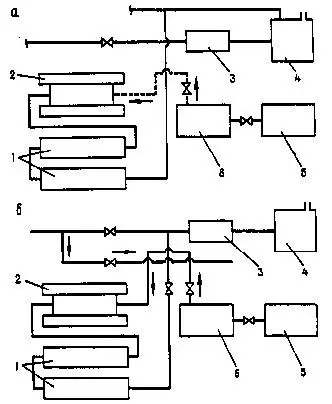
Famous (a) and proposed (b) water preparation schemes for heating: 1 - water heater; 2 - a steam heater; 3 - refrigerator; 4 - nutritional tank; 5 - High Pressure Collector; 6 - low pressure collector; pairs; condensate.
You can conduct tests at home using test kits for aquariums (they are sold in any pet store). However, to get more accurate values and most effectively prepare water for heating, you should use the services of a certified laboratory.
Water for analysis is recruited in a plastic bottle of non-carbonated drinking water with a volume of 1.5 liters. It is unacceptable to use bottles from under sweet carbonated water and other drinks. The plug and the bottle is well washed with the water that is taken to analyze, and detergent cannot be used. Previously water drain 10-15 minutes to exclude in the sample of stagnant water, as this may affect the results of tests.
To prevent the saturation of water dissolved in the air with oxygen, it is gained with a thin jet, so that it flows through the wall of the bottle. Water poured under the neck. A bottle is tightly wrapped in a plug so that the air does not penetrate it. Oxygen provokes the flow of chemical processes, and this can also affect the test results. If there is no possibility to immediately take samples to the laboratory, then water can be stored in the refrigerator (not in the freezer!), But no more than two days.
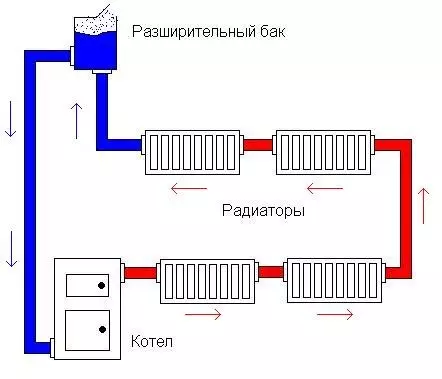
Heating system.
Complex water analysis includes checks in the following indicators:
- rigidity;
- iron;
- manganese;
- pH (degree of acidity);
- Oxidability permanganate (shows the presence of organic substances in water);
- mineralization;
- ammonium;
- oxygen saturation;
- turbidity, chromaticity, smell.
If necessary, the samples are taken for the presence of microorganisms. Some of them, for example, legionells and amids, not only are able to cause serious harm to health, but also can settle inside the pipes, forming a mucous membrane film. This contributes to corrosion and worsens the quality of heating.
Article on the topic: We make curtains from plastic bottles: master class
Too tough and too soft water
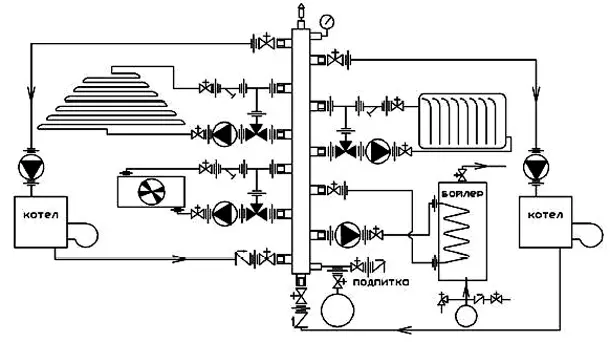
An example of a boiler room for a heating system that provides quick installation and comfortable heating and preparation of hot water in a private house, cottage, cottage.
Normal stiffness indicators - 7-10 mg-eq / l. If this value is exceeded, it means that the water contains an excessive amount of calcium and magnesium salts. When heating the salt falls into the precipitate, known as scale. Accumulating inside the pipes and batteries, scale prevents the heat transfer and contributes to the wear of the heating system.
The most affordable way of softening water is boiling. In thermal processing, carbon monoxide is removed, and therefore calcium rigidity is significantly reduced. Nevertheless, a certain amount of calcium remains in water, so completely eliminate the rigidity of boiling will not be possible.
Another cleaning method is the use of filters with inhibitors (neutralizers) scale, such as: lime, caustic soda, calcined soda. The rigid water is also passed through the filters from ion exchange resin, while potassium and magnesium ions are replaced with sodium ions.
The use of magnetic softeners belongs to the unauthorized ways of mitigating water. Under the influence of the magnetic field, the properties of water change in such a way that potassium and magnesium salts lose the ability to form in the form of a solid precipitate and stand out as a loose sludge. However, salts still remain in water and need to be eligible. In addition, this method is not so effective at water temperature above 70-75 degrees (i.e., the temperature, normal for boilers, water heaters and boilers).
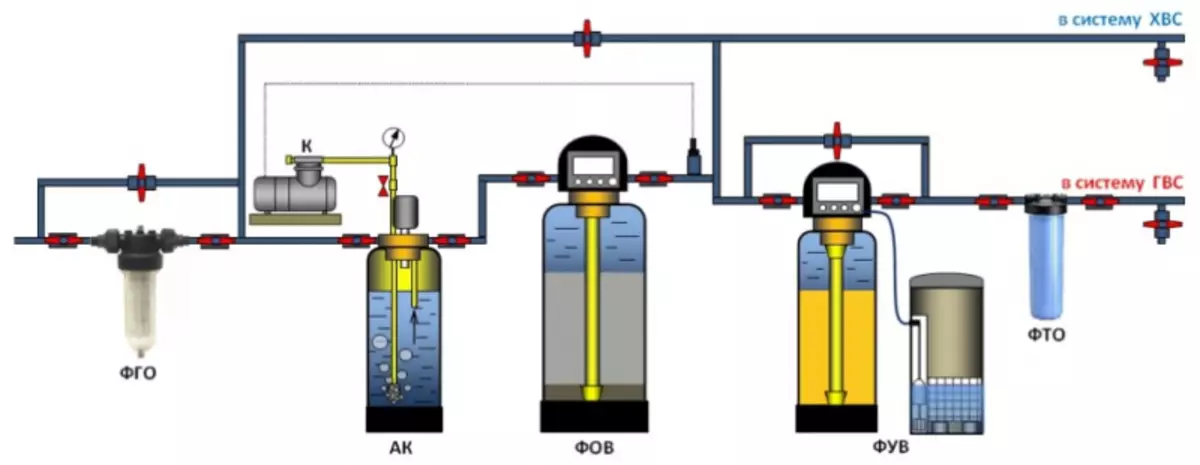
Rough Cleaning and Definking all water, water softening for heating and hot water systems (DHW).
The purification by the method of reverse osmosis is to join the water through a special membrane, delaying harmful substances. This allows you to completely remove calcium and magnesium salts, which cause scale. But this method has disadvantages: high cost of cleaning equipment and consumption of a large amount of water during cleaning (on 1 liter of clean water, about 2 to 10 liters are merged into the sewer).
Too soft desalted water, for example, rain or thala, harmful to the heating system is no less than rigid, since the calcium salts contained in water neutralize acidic reactions, slowing the corrosion. Therefore, before using rain or melting water for the heating system, it is necessary to give it to settle for several days and pour, just after making sure that its pH is within 6.5-8, but not lower. This is especially important if the layout was made of non-scattered pipes, originally susceptible to corrosion.
Article on the topic: Socket in the bathroom: Features of choice and installation
Water imbeling methods
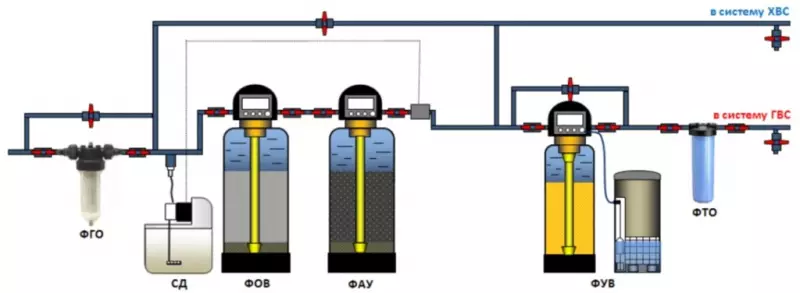
Rough purification, reagent disinfection and deafness of all water, elimination of excess chlorine and sorption waterproof water, water softening for heating systems and DHW.
The maximum allowable iron content in water for technical needs, in particular, for the heating system, should not exceed 1 mg / l. The perfect indicator is 0.3 mg / l. The surplus of iron leads to the caution of the inner surfaces of pipes and reproduction in the glandular sediment of bacteria, which occurs especially actively at 30-40 degrees of heat. This leads to a rapid wear of the hot water supply and heating system.
The easiest way to deferralization is settling. Under the influence of oxygen, iron contained in water itself is oxidized, forming a rusty sediment. To carry out an imbalance independently, you will need a large tank with a capacity of 200-300 l and an oxygen injection device: a spray installation or compressor (for small tanks a regular compressor for aquariums is suitable).
For the leading water, it is quite applicable to the same way as for softening, is the use of the method of reverse osmosis. Also applied filters with ion exchange resins. To prevent reproduction of ferruplating, chlorination (50 mg / l) is used, but it should be first to find out how much water supply facilities are resistant to chlorine.
If the iron content is in water over 5 mg / l (which is not uncommon for water from wells), then for cleaning, filters with glauconitic sand, enriched manganese oxide, are used. Having passed through the filter medium that serves as a catalyst of oxidation, water is getting rid of iron, manganese and hydrogen sulfide, which fall into the sediment. When such a filter clogs, it is required to be washed with solutions that restore the oxidative capacity (potassium permanganate solution). It should be remembered that with such a cleaning method, harmful chemicals merge into the sewage system, so it is permissible to be used only if there is a centralized sewage site.
Removal of mechanical pollution, manganese, microorganisms, oxygen

Rough water purification, disdicule of dissolved gases, deferrization, sorption cleaning, softening and disinfection of water.
To remove third-party impurities (sand, peat fibers, phyto and zooplankton, shallow clay, dirt, organic substances, etc.), various mechanical filters are used equipped with washing or removable cartridges. With very strong contaminants, pressure filters with grainy loading (quartz sand, claymzite, activated carbon, anthracite) are used.
The most clear feature of the presence of manganese is a black precipitate. Its concentration rarely exceeds 2 mg / l, but at a concentration of 0.05 mg / l, the manganese can be placed on the walls of the pipes, gradually blocking them. Usually, the manganese is dissolved in water together with the hardware, so that demogenation occurs with the decearing of water at the same time. Filters with ion exchange resins are used to remove manganese.
Article on the topic: Decoupage for the kitchen - 100 photos of examples made by your own hands
To disinfect water, that is, the removal of viruses, bacteria, the simplest microorganisms, ozonation, chlorination, as well as irradiation with ultraviolet rays with a wavelength of 200-300 nm.

Rough cleaning, reagent disinfection and deafness, water softening, elimination of excess chlorine and sorption water treatment, finishing fine cleaning.
The ultraviolet irradiation method is the safest way to disinfect water among the above, since it does not affect its chemical composition, hitting exclusively malicious microorganisms. Water disinfection using UV installations occurs in a few seconds.
The corrosion activity of water is highly dependent on the presence of oxygen dissolved in it. The rate of dissolved oxygen for a closed and open heating system is the same and amounts to no more than 0.05 mg / cubic meters. To reduce the content of oxygen in the water, deaeration settings and columns are used.
So that oxygen does not enter the heating systems in other ways (with air), you need to follow the overall integrity and tightness of the system and do not fill it too quickly, as it contributes to the formation of air traffic jams. If tubes from gas-permeable materials, for example, polyethylene or polypropylene are used, they must be protected by an anti-infusion layer of aluminum.
Washing heating system from scale
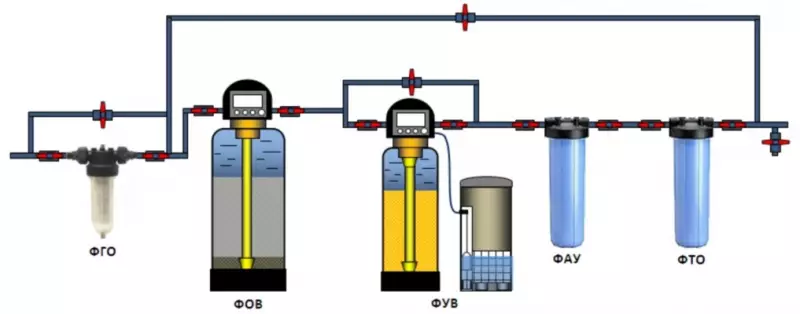
Rough Cleaning and Definking all water, water softening, elimination of excess chlorine and sorption water treatment, ultraviolet disinfection.
Proper preparation of water for heating systems includes: mechanical cleaning against contamination, mitigation, wilderness, removal of manganese and, if necessary, disinfection and deaeration. To fill in the heating system, distilled water is suitable, weathered, thaia or rain. Water for heating with corrosion and scale inhibitors is sold in specialized stores. It is good because it does not need to be prepared before the fill in the heating system.
The most thorough preparation of water does not eliminate the need to follow the heating system, especially in a private house. With a noticeable deterioration in the quality of the operation of heating batteries, a washing system is carried out. Water merges for this, then radiators are dismantled. The bottom of the bath is covered with rags, the sewer hole is covered with a mesh so that the fenced pieces of scale will not get there. Then, a radiator with removed plugs is brought into the bathroom.
Flushing is carried out by a flexible hose, removing the shower watering can. The radiator during washing should be periodically turned over. Metal bar is used to extract large pieces of scale. The flushing finish when the slices of scale and water ceases to wash the radiator and the water is transparent.
